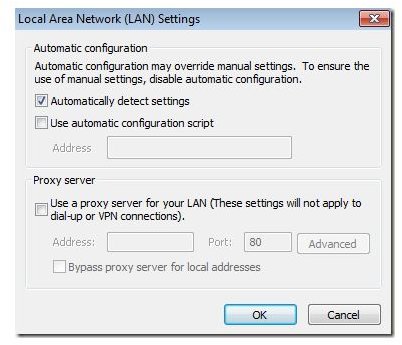Windows 7 Cannot Connect to Internet - Troubleshooting Guide for Old and New Computers
Troubleshooting Windows 7 Internet Connection – ISP Settings and Firewall
Even on new machines, I have seen people complaining that Windows 7 cannot connect to the Internet. People often blame IE8 but other factors (including firewall and Internet settings) contribute to the problem, too. Chances are low that it is Internet Explorer 8 creating problems in which Windows 7 cannot connect to the Internet. To know if the problem is with Internet Explorer or with Windows 7 settings, try this:
Open the Start menu and go to All Programs. In the Accessories menu, select Command Prompt. Type the following at command prompt:
ping www.google.com
You leave a space after the ping command and type the entire address as a single string. Check for the reply that the ping returns. If it shows “Reply from…”, the computer settings are at fault. If it shows “Request timed out,” it may mean that the ISP gateway is at fault. You may have to call the ISP to correct the problem.
To narrow the problem, use the ping command with your ISP’s gateway IP address. If it shows “Reply from…” without any data loss, the problem may be with the router. Try the ping command with your router’s IP address. If you receive “Reply from…”, it means the ISP settings are correct and the computer setting are to blame. If there is no reply, the router is at fault.
Note that you should always use the above order with the ping command (website, ISP gateway, and finally, the router). If you find that the fault is with router, you can go about setting up the router from scratch.
This is the most common fix to the problem in which Windows 7 cannot connect to Internet. Other possible causes can be your firewall. Turn it off and see if you can connect to the Internet. If you can connect, change the firewall settings.
Troubleshooting Other Potential Causes
Among the most common scenarios in which Windows 7 cannot connect to Internet are the ISP and router problems. It often happens that the router fails to recognize the new computer or sometimes, the new OS. In such cases, you can fix the problem by reinstalling the router as explained above.
Even after reinstalling the router, if Windows 7 cannot connect to Internet, you can try disabling the Internet connection. Open the Control Panel, and look for Network Adapters. Once in Network Adaptors, click on the link to Network Connections. In the network connections, right click the Internet connection and select Disable. Reboot and again go to the Network Connections. Right click on the disable Internet connection, and select Enable. You should be able to connect to the Internet. If Windows 7 still cannot connect to Internet, try the next step.
Among other possible causes are Ethernet Card drivers. Open the Device Manager (Press CTRL + BREAK and select Hardware tab) and see if the card is missing or if there is any Yellow mark next to it. If you see a Yellow Exclamation mark on the card, it means that the Ethernet card is not compatible with Windows 7. This often happens on older machines with Windows 7. Even if the computer is new, sometimes there may be problems with the driver installation. Using any other computer, download the latest drivers for the Ethernet card. In the Device Manager, right click and select uninstall. Re-install the Ethernet card with the downloaded drivers. After reinstallation, you should be able to connect to the Internet.
**
Still, if Windows 7 cannot connect to the Internet you may need to adjust the IP settings. To do this, open Internet Options under Tools menu. Select the Connections tab and then LAN Settings. Select the option that says “Automatically Detect Settings” (fig). Click OK and try to connect to the Internet.
If Windows 7 cannot connect to the Internet using IE8, but the ping command works at the website level as explained in the first section, you may need to reinstall IE8 components. This often fixes the problem. If this also fails, you may need to call Microsoft to fix the problem.
